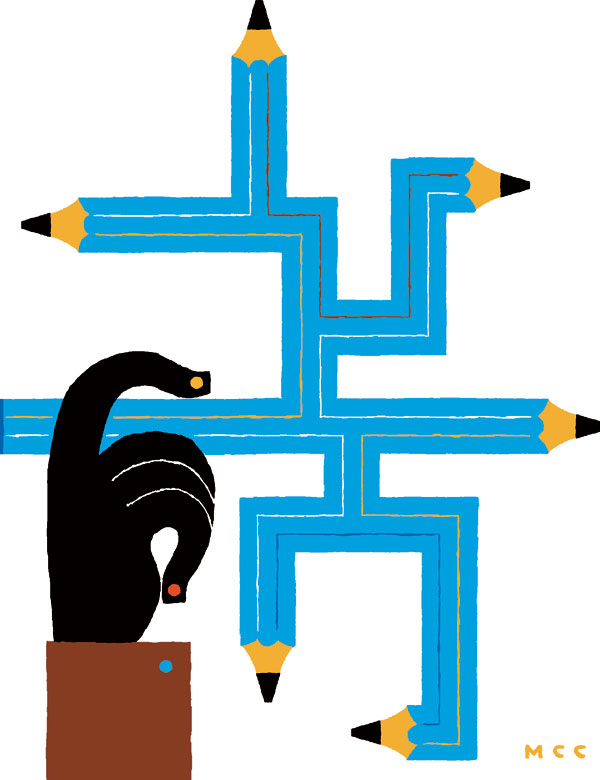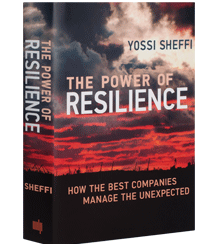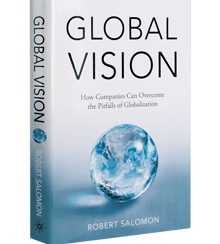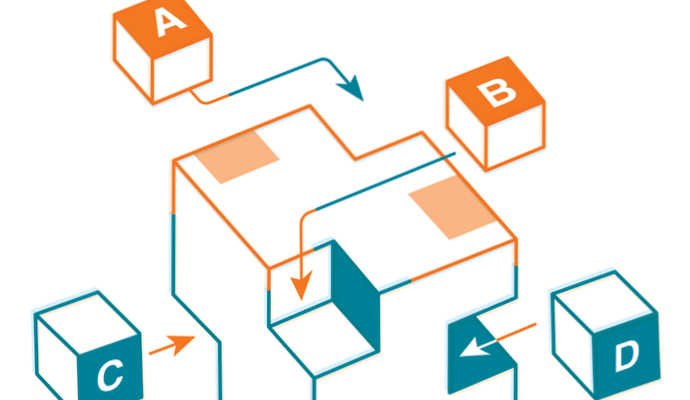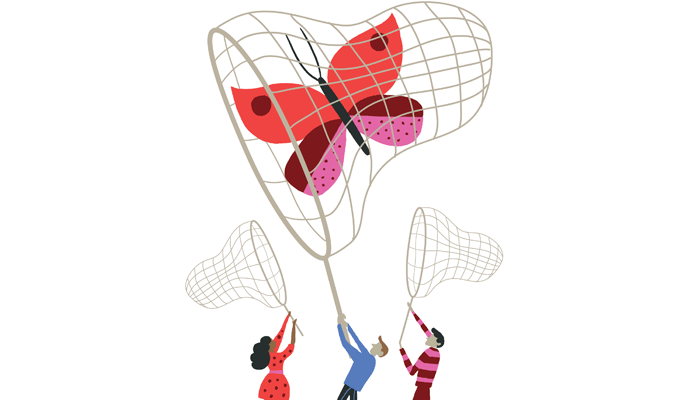Best Business Books 2016: Strategy
Planning for Unpredictability
Yossi Sheffi
The Power of Resilience: How the Best Companies Manage the Unexpected (MIT Press, 2015)
* A TOP SHELF PICK
Robert Salomon
Global Vision: How Companies Can Overcome the Pitfalls of Globalization (Palgrave Macmillan, 2016)
Adam Galinsky and Maurice Schweitzer
Friend & Foe: When to Cooperate, When to Compete, and How to Succeed at Both (Crown Business, 2015)
When Britain surprised the world by voting to exit the European Union last spring, any book publisher worth the paper it was printing on should have sensed the opportunity for a timely meditation on the state of globalization, or a chance to discuss the fragile thing that is modern industrial society. And the lesson was a familiar one: People don’t always do as the prevailing wisdom would have them do.
This year’s three most compelling books on the topic of strategy touch on how to plan for, quantify, and cope with unpredictability in life, business, nature, and geopolitics. The first two — Yossi Sheffi’s The Power of Resilience and Robert Salomon’s Global Vision — are explicitly about managing the risks faced by leaders of large global enterprises. The third, Friend & Foe, by Adam Galinsky and Maurice Schweitzer, is about relationships, both personal and business, and how to navigate the opposing forces of cooperation and competition that underlie them all.
Resilience Is Powerful
Most corporate managers and business school professors simply accept globalization as an unalloyed good. After all, if your goal is to sell more of something, more potential customers must be better than fewer. But although globalization does hold out the promise of boosting revenues, cutting costs, or both, it also exposes companies to all manner of new risks. Yossi Sheffi’s The Power of Resilience: How the Best Companies Manage the Unexpected, which stands head and shoulders above this year’s crop of the best business books on strategy, does an excellent job of covering the most important of those risks as well as best practices in everything from preparation to monitoring to drawing up crisis playbooks. And it does so while focusing on a relatively obscure corporate competence: supply chains.
An entire book on supply chains would seem to be a slog and particularly narrow. But The Power of Resilience is actually a bit of a page turner, with implications that go beyond tactics to strategy. (Stories of disaster always help a narrative along.) A professor of engineering at MIT and director of the school’s Center for Transportation and Logistics, Sheffi knows his material cold, and the book benefits from an obviously fat Rolodex of personal contacts at crucial points in various supply chains.
Sheffi delivers exactly what his subtitle promises — an explanation of “How the Best Companies Manage the Unexpected.” And there’s plenty to unexpect: In 2016, managing the supply chain of a global enterprise such as microprocessor maker Intel or automaker GM is about as complicated as the science that goes into the chips or the cars themselves, and possibly more complicated. When catastrophic events such as Japan’s March 11, 2011, earthquake and tsunami and subsequent nuclear plant near meltdown happen, dozens of crucial suppliers can be put at risk. Both the quality and the timing of the corporate response can determine whether the unexpected ends up costing a company millions or billions of dollars.
The unexpected starts with natural disasters such as earthquakes, hurricanes, or fire; in 2011, companies lost US$360 billion to nature’s whims. But disruptions are inevitable regardless of nature’s input. Between 2003 and 2013, while worldwide GDP grew 30 percent annually, global trade grew at almost double that pace, or 55 percent annually, and the size of the world’s largest container ships more than doubled. A storm in India, protests in Venezuela, a terrorist attack in Europe — the supply chain of any global company can be disrupted somewhere, somehow, every single day.
When supply chains expand, companies (and hence the economy as a whole) become exposed to new and novel risks along the way. Not just risks to the flow of goods, but risks involving money and information as well. Whether it’s so-called Deep Tier risks (disruptions at a company’s Tier Two, Three, or Four suppliers), corporate social responsibility risks, raw material risks, or something else, the hardened supply chain expert spends a tremendous amount of time thinking about what could go wrong.
Sheffi makes a compelling argument in support of proactive moves designed to enhance redundancy and flexibility, while swatting away superficial conclusions such as the idea that supply chain resiliency is an expensive option that pays off only in a disaster. Resilience efforts, he shows quite clearly, can drive everyday improvement in costs, operations, revenues, reputation, and responsiveness.
Sheffi’s discussion of how the “global bullwhip” of corporate reaction to a crisis sends tremors up and down every supply chain is also illuminating. If a retailer experiences an X percent drop in sales, for example, leaders are likely to cut orders by 2X percent, both to plan for softer future sales and to manage inventory. At the next node, the size of the cuts might double again. Although consumer demand declined by only 12 percent during the 2008 financial crisis, inventories were shaved 15 percent, manufacturing sales declined 30 percent, and imports fell by more than 30 percent.
The book focuses the mind on the crucial measure of time, starting with the speed of detectability (information can and does flow faster than disaster itself) and going all the way through recovery, which in some cases can take years. Consider General Motors and the 2011 earthquake in Japan. At first glance, the automaker determined that only 390 of the more than 30,000 parts that go into each car were at risk. That sounds like a rounding error, but supply chain forecasting also showed that a persistent shortage of just a few of those 390 could shut GM’s entire production down by month-end. The company dodged that worst-case scenario, but by mid-April, the number of affected parts had risen to 5,329. This story has a happy ending for the company: GM ultimately had to idle production only of Chevy Colorado small trucks in Shreveport, La., for one week. Consumers probably didn’t even notice the slight and temporary reduction in the range of vehicles available.
Other stories don’t end so well. In early 2007, a shortage at a paint supplier of toymaker Mattel resulted in the company having to use a backup supplier that insisted its product was safe. It was not, and Mattel ended up recalling some 2 million toys and paying a fine of $2.3 million for violating a federal ban on lead paint.
The Hershey Company keeps six months’ inventory of milk chocolate in a secret refrigerated warehouse.
Sheffi outlines the many things you want to have in place before a disruption, starting with a crisis communications protocol. Before Hurricane Katrina hit land, for example, Procter & Gamble had plans in place to ensure continuity of pay, interest-free loans, and even counseling for its employees in the storm’s expected aftermath. Cisco employs an in-house Resiliency Index to score and then monitor all product introductions. The company also has at least 14 supply chain incident management playbooks, and four levels of alert: L0 (“watching”), L1 (“minor impact expected”), L2 (“$100 million impact expected”), and L3 (“$1 billion impact expected”). The Hershey Company keeps six months’ inventory of milk chocolate in a secret refrigerated warehouse.
If you’re in the market for a thoughtful how-to detailing others’ handling of a crisis you yourself may just see one day, this is it.
Quantifying Risk
Sheffi’s book is a master class on the need for business strategists to reimagine complex networks and use human intelligence, insight, and experience to find ways to plan for risks proactively. But what if it is possible for number crunching to do this task? What if we can turn over the risk-assessing strategy to a computer? That, in effect, is the argument Robert Salomon makes in Global Vision: How Companies Can Overcome the Pitfalls of Globalization.
Salomon, an associate professor of international management at New York University’s Stern School of Business, approaches the challenge from a perspective that is similar to the one Sheffi uses. Business is getting ever more global, but risk increases when you do business outside your home turf. It’s a phenomenon described in the field as the “liability of foreignness.”
The liability arises thanks to differences among countries in consumer tastes, business practices, and legal systems. British supermarket giant Tesco, we are told, “learned the hard way that it is important to understand the local consumer culture” when it lost nearly $2 billion on its disastrous U.S. rollout of its small grocery stores, “Tesco’s Fresh & Easy.” The brand occupied the middle ground between convenience stores and supermarkets, only to realize that few customers were looking for a third way.
Likewise IKEA, whose 15-year struggle in Russia provides a “hard lesson” about the fact that in some countries, your power supplier might back out of a contract, be sued by you, and then win a judgment in its favor. In other words, some countries might say all the right things about foreign investment, but when push comes to shove, local interests will take precedence, even if the law says otherwise.
Instead of looking to the best practices of the Fortune 500, Salomon seeks salvation in data. The ease or difficulty of doing business in another country isn’t determined only by the norms and culture of that country; it’s also determined by the ease or difficulty of doing business that you’re accustomed to in your home country. Salomon believes it is possible to measure and express as a number such differences as the “institutional distance.” And, he continues, “studies show a positive correlation between institutional distance and the level of risk in doing business across countries.” When crafting a global strategy, he argues, executives would be well advised to calculate that distance.
The next step is to factor that knowledge and information into investment decisions. Salomon has developed an institutional risk pricing algorithm, Global Acumen, that helps quantify and value the risk of operating outside a company’s home market. In short, when discounting the future cash flows of a project, the cost of capital (aka the discount rate) used to justify potential international expansion needs to be adjusted for the increased risks of taking that step. A proposed Starbucks in Senegal, for example, should use risk calculations different from those for a possible Starbucks in Seattle.
It’s difficult to argue with the logic of this data-centric approach to strategy. But we journalists don’t always share the faith of social scientists that if we could just get our hands on the right data, everything that matters could be calculated with great precision. Too frequently — the 2008 financial crisis, Superstorm Sandy, the Arab Spring, the 2016 Brexit vote, terrorist attacks in Europe — events roll out in ways that defy precision, amplify risk, and confound the best-laid plans.
Frenemies with Benefits
Uncertainty doesn’t pertain simply to the way events unfold. There’s also great uncertainty in the relationships we have with one another as individuals, managers, and executives. In Friend & Foe: When to Cooperate, When to Compete, and How to Succeed at Both, Adam Galinsky and Maurice Schweitzer describe how to understand and navigate this ambiguity successfully. “[The] question — should we cooperate or should we compete — is often the wrong one,” write the authors. “Our most important relationships are neither cooperative nor competitive. Instead, they are both. Rather than choosing a single course of action, we need to understand that cooperation and competition often occur simultaneously and we must nimbly shift between the two, and that how we navigate the tension between these seemingly opposite behaviors gives us profound insight into human nature.” (The authors themselves represent this dynamic: Galinsky teaches management at Columbia Business School, and Schweitzer teaches at the University of Pennsylvania’s Wharton School. The two institutions are fierce rivals for students and faculty.)
This is a fine strategy for going through life, but also for thriving in competitive arenas, such as business and sports. To buttress their case, the authors draw on research not just from the social sciences (psychology, economics, sociology, political science) but also from animal studies that reveal the primal essence of it all and neuroscience that purportedly reveals that the tension between cooperation and competition is “wired into the very architecture of the human brain.”
It turns out there’s an evolutionary basis for why humans, and the organizations they build, toggle between cooperation and competition. Galinsky and Schweitzer write that three “fundamental forces” impel us to act as both friends and foes: Resources are scarce; humans are social beings; and our social world is inherently unstable and dynamic. In other words, not everyone can have everything they want, so most of us are compelled to compromise more often than we’d like.
The same fundamental forces are at work in the corporate arena, as well. And we can see this in hypercompetitive realms. Take bicycling. In the Tour de France, resources — stage victories — are scarce and the outcomes are always uncertain. So it’s not uncommon to see riders and teams, all of whom are seeking their own glory, cooperate to set the pace, chase down breakaways, and deny victories to others. Or take entertainment and media. Resources such as advertising dollars and viewers have become scarce for incumbents. The future of distribution and business models is highly uncertain. So a handful of companies that usually exert great effort to dominate one another — Disney, Time Warner, 21st Century Fox, and Comcast — have joined forces to build Hulu as a content platform. In the automotive industry, companies that compete fiercely have banded together to support fundamental research on alternative fuels and batteries, and to develop common standards.
Galinsky and Schweitzer argue, correctly, that circumstances should dictate the ways in which we relate to our counterparts on a strategic level. At the end of the day, we’re all frenemies.
Reprint No. 16417
Author profile:
- Duff McDonald is a columnist at the New York Observer and author of The Firm: The Story of McKinsey and Its Secret Influence on American Business (Simon and Schuster, 2013) and Last Man Standing: The Ascent of Jamie Dimon and JPMorgan Chase (Simon and Schuster, 2009). He is working on a book about Harvard Business School.


